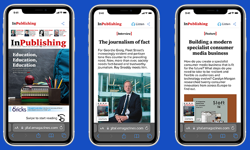Increasingly, success requires leveraging mobile and social media platforms, as well as pushing web platforms to next levels — and integrating these with traditional media or platforms.
Yes, print ad revenue growth is modest, still far from peak levels, and tenuous as marketers shift ever-greater portions of their budgets to online / mobile. In first-half 2011, revenue gains for US-based B2Bs fell this way, per Business Information Network (BIN) tracking: digital +23%, data-based services +7.8%, print +4.9% and tradeshows +1%. More telling, digital’s share of total revenue grew from 20% in 1H 2010 to 23.3% in 1H 2011 and data’s edged up from 6.7% to 7%, while print’s declined from 30.8% to 30.2% and tradeshows’ declined from 42.5% to 39.5%.
Bottom line: Digital and data services are rapidly gaining in importance, but tradeshows and print still represent 70% of total revenue, at least on an industrywide basis. Will most B2Bs be all-digital five or ten years from now? Seems very likely, but no sane company is about to abandon print as long as it’s a big, still-profitable chunk of business. And B2Bs view live events, with their data-building and cross-platform synergies, as more critical than ever.
For many, of course, the biggest areas of push are lead-gen and marketing services, including content marketing, custom publishing and app development. At the same time, new platforms represent new opportunities to yield revenue from business audiences, as well as marketers.
IDG CEO Bob Carrigan recently summed it up this way, speaking to Publishing Executive: Category leadership is “no longer just about great print brands and great websites. It’s about great services for users and advertisers, and this has been the most explosive part of our business.”
“End users want content in a variety of formats and delivery methods including mobile, video, and via physical events, to name a few,” he stressed. “It's our job to be there when and where our end users need us. Regarding marketers / advertisers, we try to be just ahead of [their] needs so that we can help show them the way.”
For both customer sets, mobile is the next big playing field. “We view the move from the conventional web to the mobile web as a continuation of the story that users and marketers are moving forward in a digital direction, and IDG is all over it,” Carrigan said. “We're very excited about generating more end-user revenue in the mobile space because of the ability… to give highly personalised content with very easy payment mechanisms — whether iTunes or other emerging methods,” he noted.
Given the complexity of all B2Bs’ multi-pronged agendas, the core challenges come down to investment decisions and resources allocation.
Clearly, relatively few companies have IDG’s global scope, not to mention customer bases that are first to embrace each new platform advancement. But all established B2Bs, IDG included, are to one degree or another in a race against venture-backed enterprises — particularly, as Carrigan noted, in emerging audience-targeting methods.
No company has limitless resources. That’s why, regardless of the industry sector or company size, the most crucial takeaways from Carrigan’s remarks are these: Profitable growth requires constant, careful listening to the needs of both end-users and marketers (now accomplishable by affordable social media and web analytics, as well as traditional research) — which in turn enables focus. Meaning identifying and investing in the right opportunities, which vary both by business segment and geographic market.
Dedicating resources
IDG’s organisational approach to achieving focus is creating dedicated groups for businesses such as marketing services and lead-gen, as well as having editors and salespeople dedicated to specific media brands. Unrealistic for most? Perhaps. But here are the Carrigan remarks that no B2B can afford to dismiss: “I can't expect the people who come in every day and do a particular thing, whether it's producing a magazine or producing an event, to create these giant businesses and compete head-to-head with pure-play companies… When you dedicate resources, all kinds of wonderful things happen.”
Amid the urgency of capitalising on new businesses / platforms, B2Bs — make that all media companies — risk losing sight of the reality that the market / audience knowledge of expert “content generators” is their core, differentiating asset, the ultimate driver of both end-user and marketer revenue. Particularly as marketers increasingly seek to create their own content, investing (prudently but adequately) in order to offer truly valued content from trusted, authoritative B2B media brands is easily as crucial as providing the right platform solutions.
Hanley Wood recently created a “president of content” position, after a consultancy study revealed that “editors felt they didn’t have a voice in a lot of important decision-making that affected editorial and that they were represented in a proxy way,” CEO Frank Anton told Folio:. Group publishers, initially wary, are now recognising that this will enable them to focus on building revenue and strategic planning, Anton said. Bully for Hanley Wood for recognising that investing in focus, including content expertise, is very much in its own business interests. Meanwhile, “content farms” that treat editors / writers like automatons (think Demand Media) are seeing their models implode.
Like their counterparts in sales, audience development and other areas, business-savvy editors are enthusiastically multi-tasking a growing number of functions (social media outreach, etc), with far leaner staffs and other resources. But there’s a limit. Providing professionals with enough resources to focus long enough to think, generate insightful, revenue-enhancing ideas and, in the case of editors, produce content that’s worth paying for (or even downloading) may prove to be the ultimate competitive “secret weapon”.










